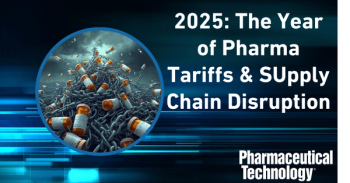
Equipment and Processing Report
- Equipment and Processing Report-10-19-2011
- Volume 0
- Issue 0
Isolated Robotics: The Future of Aseptic Operations
The future, and increasingly the present, for aseptic operations is isolated robotics. Companies that wish to gain competitive advantages in their operations are stepping up and taking notice.
The United States Air Force has invested in robotic aircraft because manned aircraft are complex and expensive to build and operate, and because robots spare humans from potential hazards and reduce failure rates. These same considerations are relevant in the modern aseptic pharmaceutical plant that produces life-saving drugs. Complex, multistep processes performed at these sites with expensive materials result in fragile and valuable products. Building facilities that rely on manned operation requires large volumes of highly filtered air and space sufficient for human motion and intervention into processes. Manned operation also limits the ambient conditions possible for processing. Sites intended for human operators can be expensive, complex, and prone to failure.
With a history of more than 40 years in the manufacturing industries, robotic manufacturing is not a novel approach to producing goods. Indeed, many industries consider robotics as their first choice for sensitive or hazardous processing. It has taken until today, however, for robotics to enter the modern aseptic pharmaceutical facility and, most importantly, isolator systems. This delayed entrance has resulted from traditional cleanroom robots’ failure to accomplish the following things:
- Limit particle generation to levels acceptable within an ISO 5 space
- Seal sufficiently, with respect to the ingress of clean-in-place water and the egress of toxic material from the isolated space
- Withstand sterilizing agents, such as hydrogen peroxide and chlorine dioxide
- Be effectively and reliably sterilizable with these same surface-sterilization agents.
Almost no other industry has required these conditions, and, consequently, the robotics industry showed little interest in fulfilling them. But all of these conditions are crucial for the successful and efficient deployment of robotics within modern isolator systems. Recent developments in the field, however, have advanced robotic technologies to a state of readiness for GMP deployment. Yet these strategies must not be applied as an added level of complexity to existing filling or processing systems.
The development of cleanroom-grade, 316L stainless-steel robotics with sealed structures has enabled engineers and architects to look at design strategies without the limitations present previously in manned operations. The required clean space necessary for isolated robotics is often less than one quarter of that required for manned operation. Isolated robotics also have the potential to operate under inert gas, thus providing the ability to limit products’ exposure to oxygen.
Furthermore, isolators designed for robotic operations have the potential to be much simpler in shape and layout because they do not have the limitations of gloved access imposed by manned operation. Contrasting traditional isolator designs with a multitude of gloves and complex shapes often require peroxide aeration times of greater than 20 h. This requirement massively reduces facility uptime and makes product changeover difficult and time-consuming. Indeed, the cost and complexity of such systems have prompted some companies to back away from isolator technology in favor of restricted-access barrier systems (RABS). This change is a step backwards, however, because the procurement and implementation costs of RABS are greater than those of isolators. Operating costs for RABS are roughly double those of isolators.
Regulatory factors are also encouraging the advancement of unmanned aseptic production. FDA and EMA have asserted the need to eliminate human interventions in aseptic operations (1, 2). These interventions are viewed as the largest source of contamination risk, and pharmaceutical companies are increasingly experiencing difficulties in justifying previously acceptable facility designs and practices. Removing gloves and personnel from direct interaction with the process yields a more predictable and reliable product.
Large pharmaceutical companies are now undertaking efforts to define their factory of the future. In many ways, they are coming to the same conclusions as many industries engaged in complex, expensive operations that carry significant risk to humans have.
The future, and increasingly the present, for aseptic operations is isolated robotics. Companies that wish to gain competitive advantages in their operations are stepping up and taking notice. The result will be cheaper, safer medicines when and where they are needed.
References
1. Rick Friedman, presentation at the ISPE Conference (Washington, DC, 2009).
2. Ian Thrussell, presentation at the ISPE Conference (Strasbourg, France, 2009).
Christopher Procyshyn is chief executive officer of VanRX, #200 - 3731 N. Fraser Way, Burnaby, BC, Canada, tel. 604.453.8660.
Articles in this issue
about 14 years ago
Scaling Up a Tableting Processabout 14 years ago
Steps for Reducing Glass Delaminationabout 14 years ago
October 2011 Editor's Picks: Products from Edwards and MoynoNewsletter
Get the essential updates shaping the future of pharma manufacturing and compliance—subscribe today to Pharmaceutical Technology and never miss a breakthrough.




